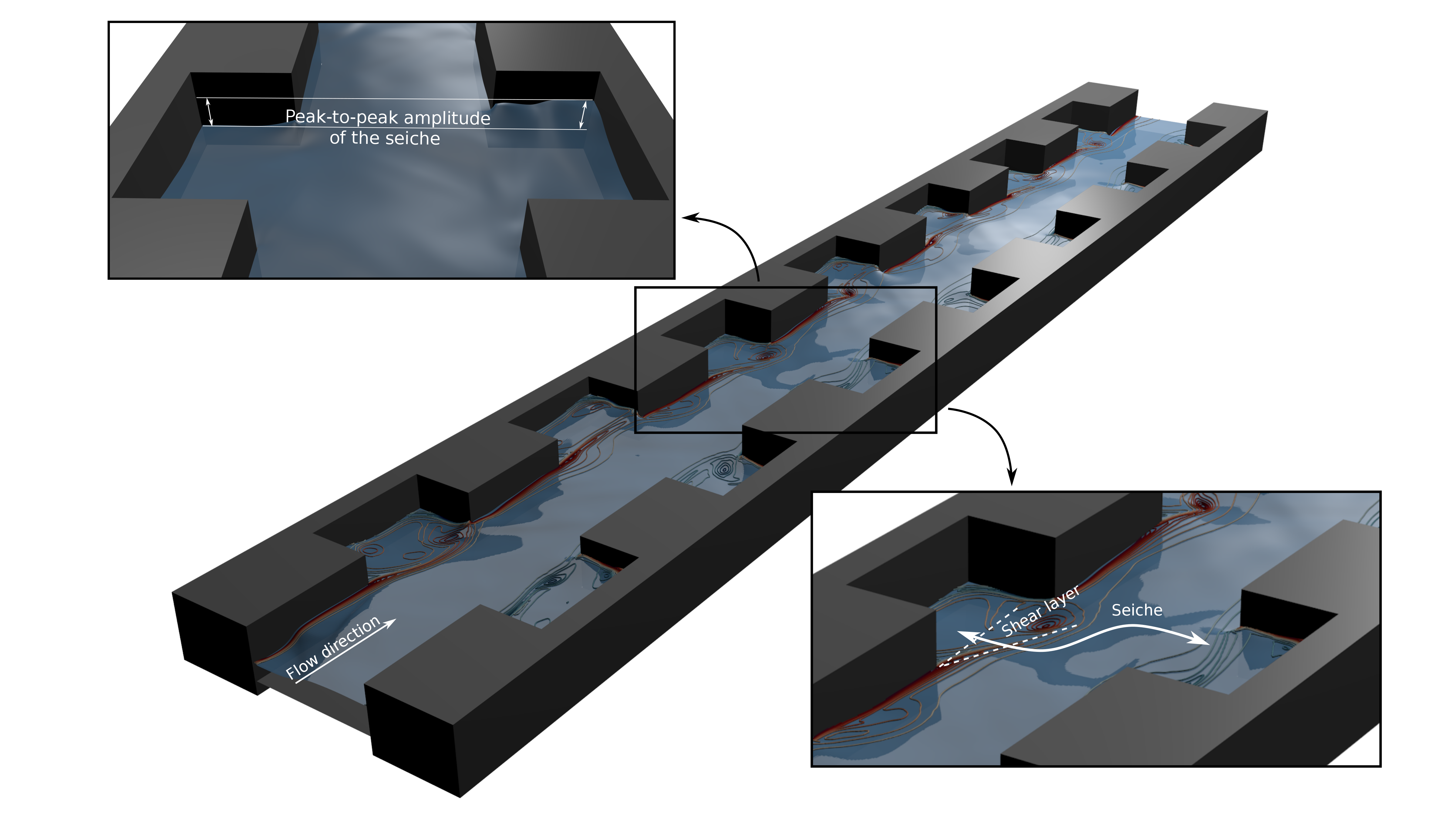Numerical characterization of seiche waves energy potential in river bank lateral embayments
Funding institution: Centro Universitario de la Defensa (Spanish Ministry of Defence)
Date: 01/01/2021 - 31/12/2021
PI: Adrián Navas Montilla
Number of participants: 3
Abstract
Lateral embayments or cavities built in the river banks are used to accomplish a two-fold mission: channel stabilization and enhancement of morphological diversity and habitat suitability. The presence of these lateral embayments in the shallow flow of rivers may trigger standing resonant waves in the cross-flow direction. These water surface oscillations, typical of enclosed water domains, are called seiches (see Fig. 1). Amplitude and frequency of seiches are jointly controlled by the geometry of the embayments and by the flow rate. The study of seiches from an energy harvesting perspective is herein considered. In this work, an in-house numerical simulation model is used to assess the seiche wave energy potential in a channel with multiple lateral cavities. The model, which is based on a high-order discretization of the shallow water equations, allows to reproduce the resonant phenomena using an Unsteady Reynolds Averaged Navier-Stokes approach. The numerical results indicate that there is a range of hydraulic conditions under which energy is concentrated in a dominant cross-flow resonant seiche wave. The optimal hydraulic conditions to operate a seiche wave energy recovery are shown and discussed. High flow rates alone do not control the energy recovery efficiency, actually, a tipping point in the embayment efficiency ratio is identified. The co-existence of multi-modal seiche waves challenges the dominance of the standing wave period of interest for energy harnessing.

Objectives
- Development of a methodology for the estimation of the energy content of seiche waves using water surface data.
- Application of a high-resolution shallow water solver to reproduce the resonant flow in a channel with lateral cavities in a wide a range of hydraulic conditions of physical relevance.
- Assesment of the energy content of the seiche in the cases reproduced in the previous points.
- Generation of 2D seiche amplitude and energy maps.
Outcome
Publications in high-impact factor international journals
- Publication in Renewable Energy (Impact factor: 8.001, Q1): Juez, J., Navas-Montilla, A., Numerical characterization of seiche waves energy potential in river bank lateral embayments, Renewable Energy, Volume 186, 2022, Pages 143-156.